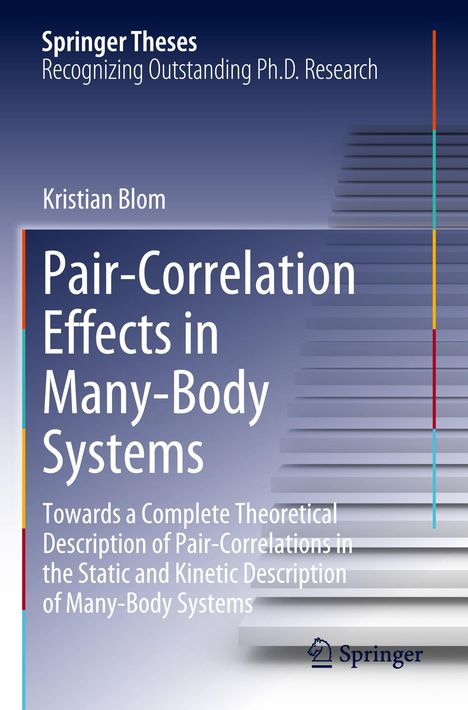Kristian Blom: Pair-Correlation Effects in Many-Body Systems, Kartoniert / Broschiert
Pair-Correlation Effects in Many-Body Systems
- Towards a Complete Theoretical Description of Pair-Correlations in the Static and Kinetic Description of Many-Body Systems
(soweit verfügbar beim Lieferanten)
- Verlag:
- Springer Nature Switzerland, 05/2024
- Einband:
- Kartoniert / Broschiert, Paperback
- Sprache:
- Englisch
- ISBN-13:
- 9783031296147
- Artikelnummer:
- 11881706
- Umfang:
- 196 Seiten
- Nummer der Auflage:
- 2023
- Ausgabe:
- 2023
- Gewicht:
- 306 g
- Maße:
- 235 x 155 mm
- Stärke:
- 11 mm
- Erscheinungstermin:
- 28.5.2024
- Hinweis
-
Achtung: Artikel ist nicht in deutscher Sprache!
Weitere Ausgaben von Pair-Correlation Effects in Many-Body Systems |
Preis |
|---|
Klappentext
The laws of nature encompass the small, the large, the few, and the many. In this book, we are concerned with classical (i. e., not quantum) many-body systems, which refers to any microscopic or macroscopic system that contains a large number of interacting entities. The nearest-neighbor Ising model, originally developed in 1920 by Wilhelm Lenz, forms a cornerstone in our theoretical understanding of collective effects in classical many-body systems and is to date a paradigm in statistical physics.
Despite its elegant and simplistic description, exact analytical results in dimensions equal and larger than two are difficult to obtain. Therefore, much work has been done to construct methods that allow for approximate, yet accurate, analytical solutions. One of these methods is the Bethe-Guggenheim approximation, originally developed independently by Hans Bethe and Edward Guggenheim in 1935. This approximation goes beyond the well-known mean field approximation and explicitly accounts for pair correlations between the spins in the Ising model.
In this book, we embark on a journey to exploit the full capacity of the Bethe-Guggenheim approximation, in non-uniform and non-equilibrium settings. Throughout we unveil the non-trivial and a priori non-intuitive effects of pair correlations in the classical nearest-neighbor Ising model, which are taken into account in the Bethe-Guggenheim approximation and neglected in the mean field approximation.


